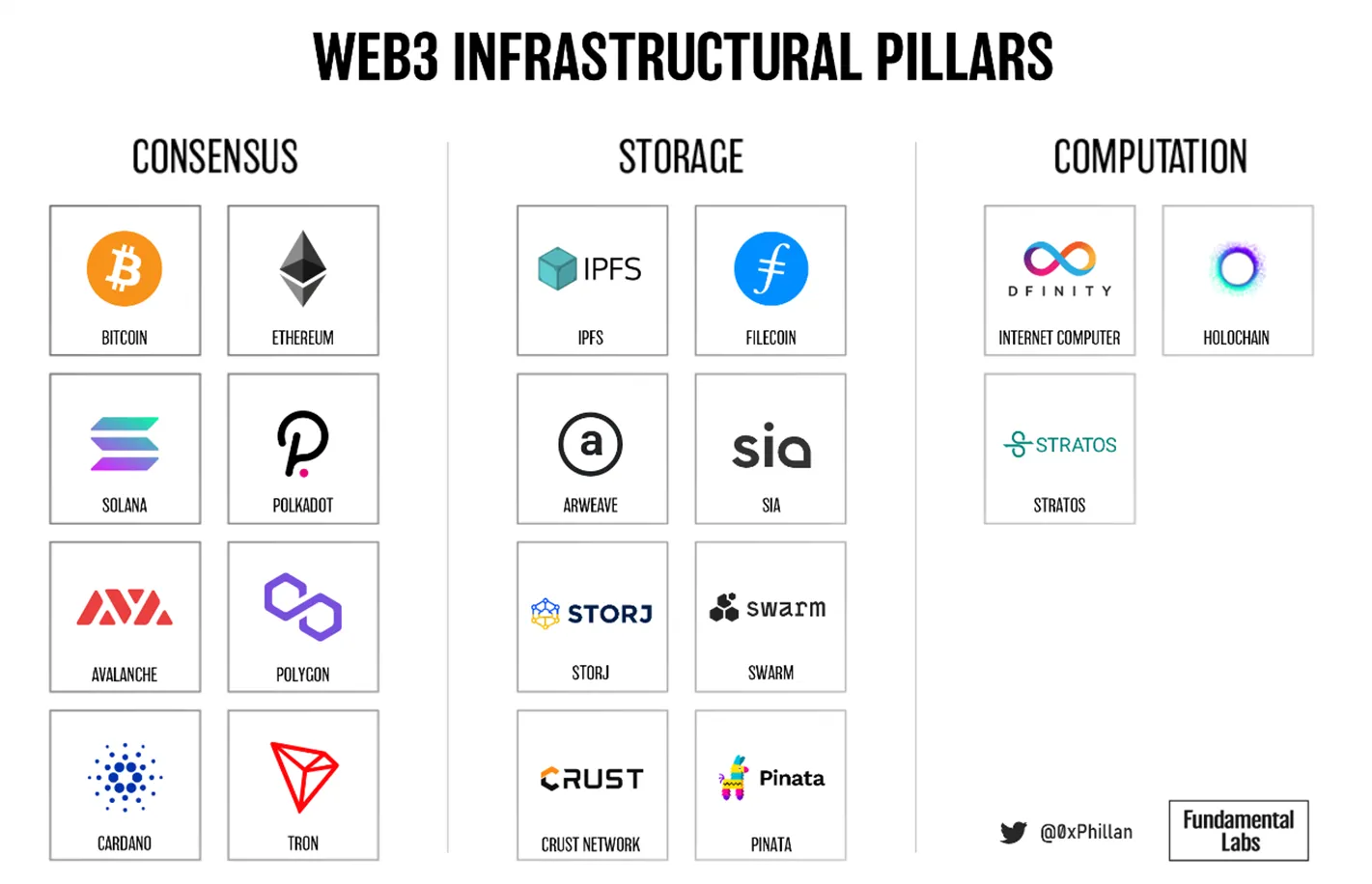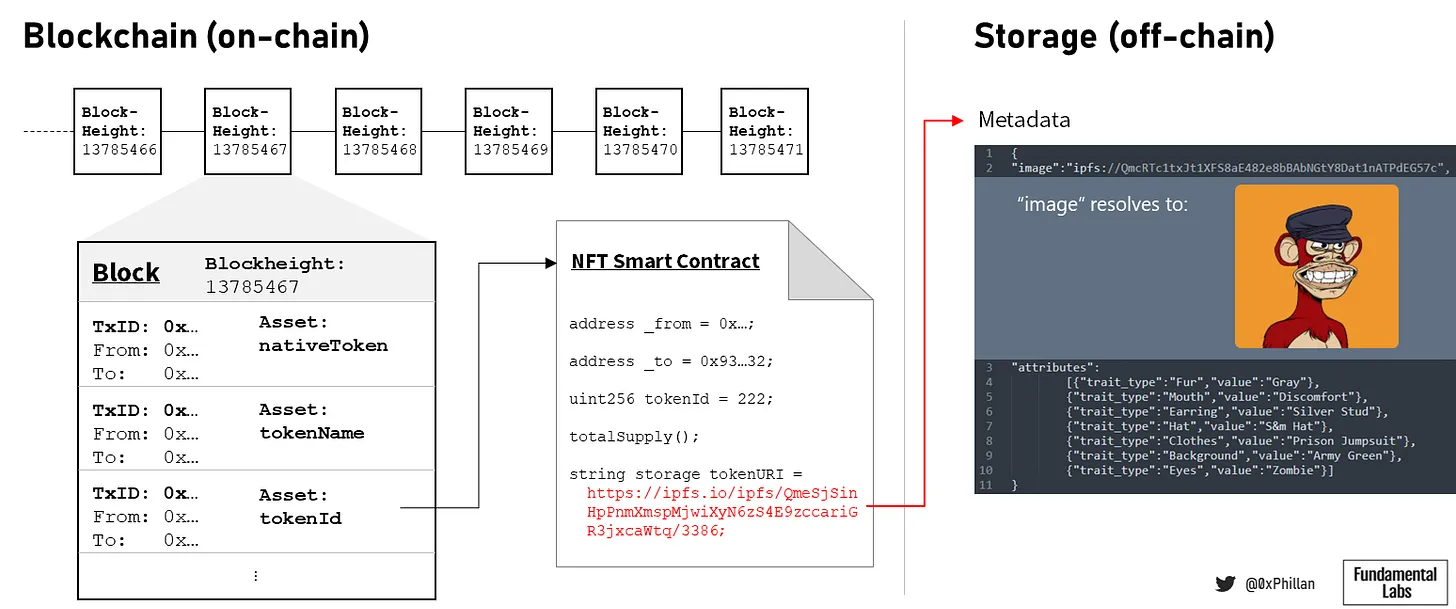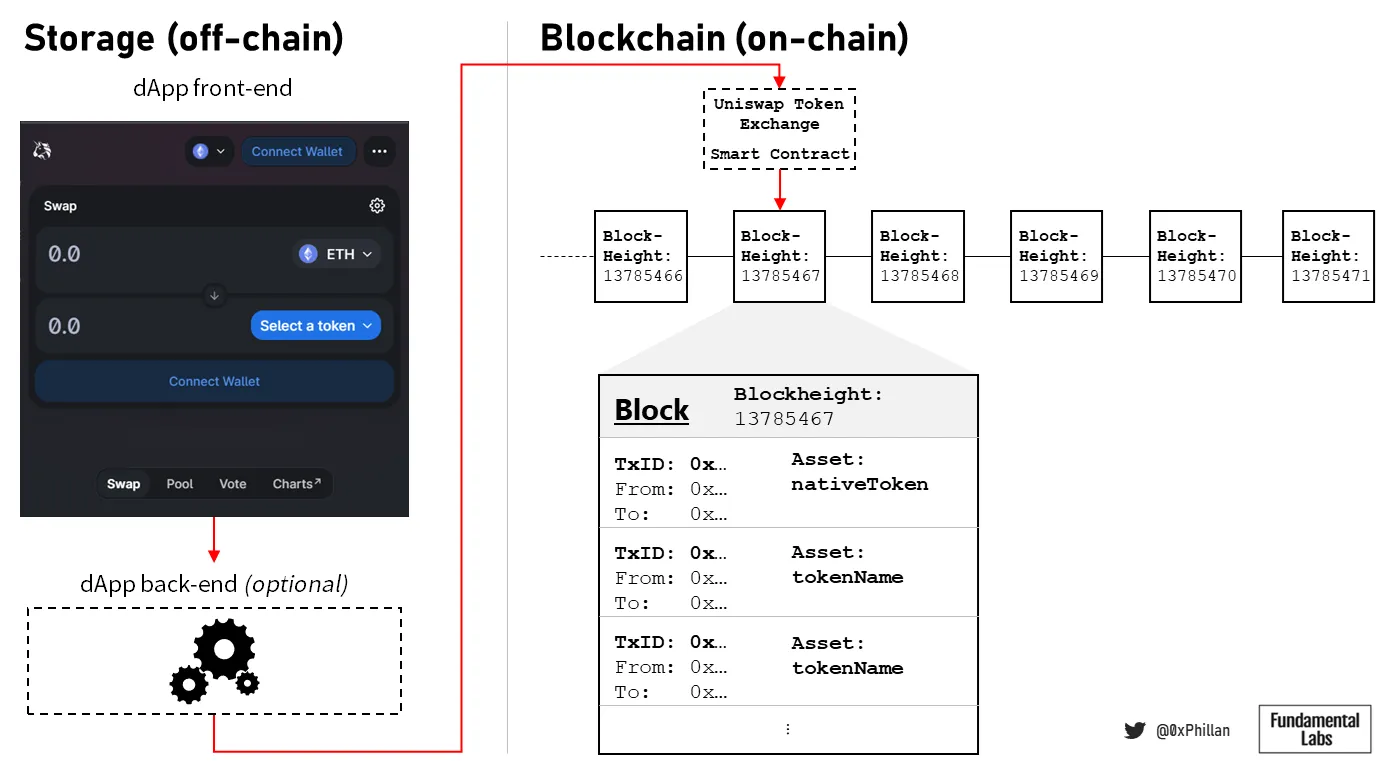Decentralized Storage 101: The Basics
Sep 28, 2022 . 3 min read . 481 views
title: 'Decentralized Storage 101: The Basics' publishedAt: '2022-09-28' summary: 'The three pillars of web3 infrastructure layer...' category: '#web3'
The three pillars of the web3 infrastructure layer
- Consensus: Matured quickly since the launch of Bitcoin in 2009.
- Storage: Rapidly maturing since the launch of IPFS in 2015.
- Computation: Still in the early stages.

What is a decentralized storage
Decentralized storage is a peer-to-peer network where network participants combine disk space to create a global hard drive that is trustless, immutable and in some cases permanent and censorship-resistant.
Why we need decentralized storage
vs. centralized storage
- Decentralized storage is trustless i.e you do not have to rely on an entity such as AWS/GCP to access your data. If tomorrow one of these companies shuts down you will lose your data.
- Decentralized storage is immutable i.e the data cannot be modified or changed by anyone over time.
- No downtime. With decentralized storage a copy of your data is stored on several different nodes. When one node is down you do not lose access to your data, unlike centralized services.
vs. storing data on blockchains
- Blockchains have limited data storage making on-chain data storage very expensive
- As the block size increases, this results in increased network congestion and higher gas prices for end-users
Current decentralized storage use cases
Use Case 1: NFT storage
In this case, the NFTs themselves do not contain image data. Instead, they contain a pointer to an image and metadata that is stored off-chain.
Sometimes apps might also have a simple backend that moves certain calculations off-chain to reduce the gas required, and thus costs incurred by end-users, for certain transactions.

Use Case 2: dApp Front end storage
In this case, Uniswap’s front-end code is hosted off-chain while the backend is on-chain.

Best decentralized storage service by use case
- Cold Storage: Filecoin
Best to store large amounts of data in an immutable fashion.
This is data that you want to keep, but rarely need to access. e.g: Historical data from previous years
Centralized Alternative: Amazon Glacier
- Hot Storage: Crust
Best for high-traffic dApps and fast retrieval of data.
This is the data that is frequently used and accessed, like documents on your hard drive, which means it requires faster (and more expensive) hardware.
Centralized Alternative: Google Drive, Amazon S3
- Privacy: Sia
On Sia, nodes do not know where the other data fragments are stored and which data these fragments belong to. Only the data owner can reconstruct the original data from the fragments in the network.
- Permanence: Arweave
Best for storing data that needs to be available for eternity.
- Decentralized AWS: Storj
A decentralized AWS replacement. Storj offers a simple payment and billing approach. It removes complex payment and incentive systems found in other blockchain-based systems.
Storj also allows the editing of data through the use of authorizations.
- Ethereum storage: Swarm
Swarm is built on top of the Ethereum network and it ensures the storage costs remain relatively low over time as more data is stored on the network.
It is best suited for Ethereum-based dApps.